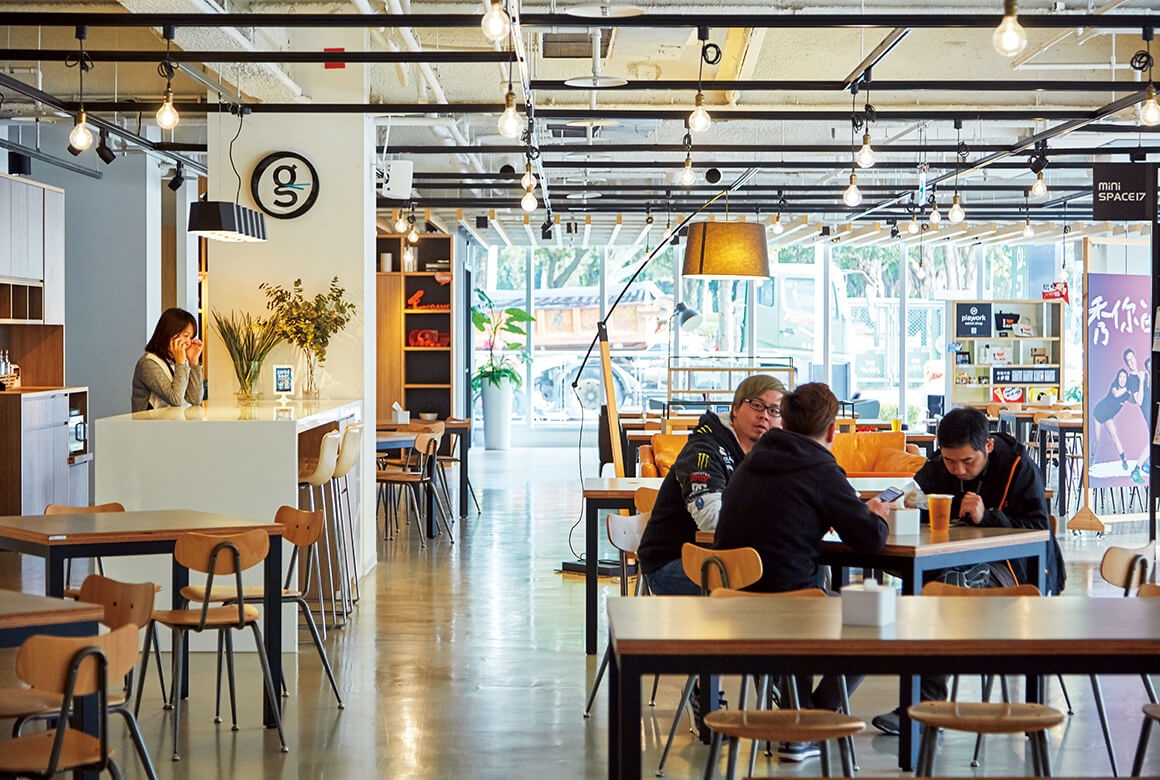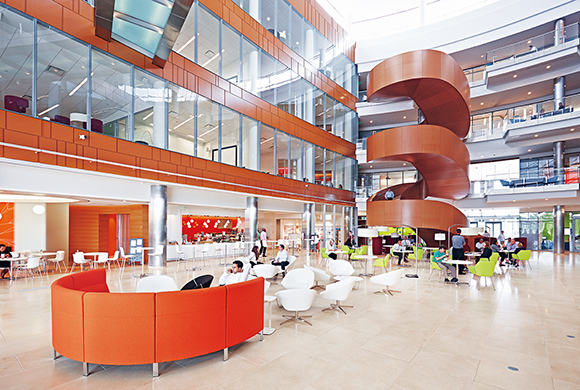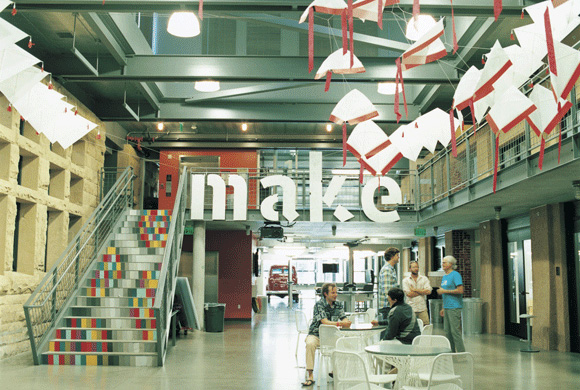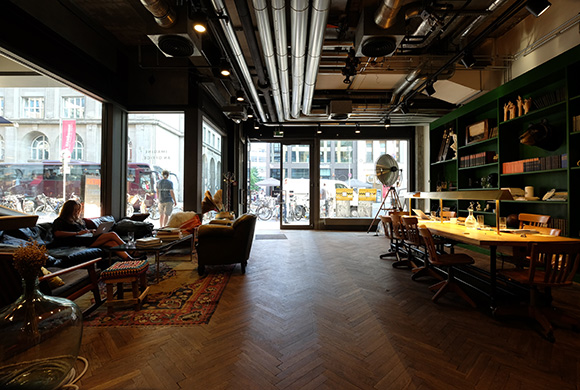Workplace
Oct. 2, 2017
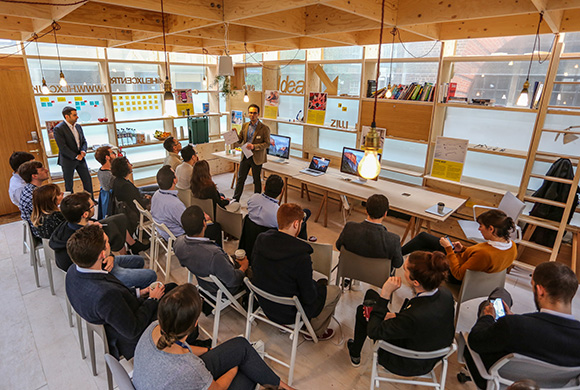
Working to Solve Medical Problems in the UK:
Translating Medical Research into Practice through Design
A Joint Project of ICL and RCA
[The Helix Centre] London, UK
Problems related to medical care can be solved through the power of design: a unique project exploring this is the Helix Centre in London.
The Helix Centre is a joint project with Imperial College London (ICL), one of the world’s leading science universities with particular strength in medicine, and the Royal College of Art (RCA), a world-renowned art and design institution. The project is based on the premises of St. Mary’s Hospital, part of Imperial College NHS Trust.
“The idea for Helix stemmed from positive collaborative projects between the RCA and ICL, one of which was the redesign of the emergency ambulance,” says Senior Designer Gianpaolo Fusari. “the success of that and a few other projects inspired the decision to apply for a Higher Education Funding Council for England (HEFCE) grant, which was used to establish the Helix Centre.”
“The goal of the Helix Centre is to develop solutions to the problems faced in the delivery of healthcare by creating opportunities for collaboration between designers and clinicians,” Fusari says. “By being immersed in the healthcare space the designer can think concretely about the human problems faced day to day in the hospital, for example the way treatment procedures are communicated to patients and how they understand this information.”
The project team is formed with excellent designers from the RCA, outstanding clinical researchers and engineers from ICL and onsite medical professionals from the NHS Trust. All projects are resourced by people with a background in one of these areas as well as patients. Being based within a hospital allows the Centre to assemble teams with deep understanding of the realities in healthcare.
The budget, however, is limited. The NHS is the UK’s public health care organization, providing people free access to treatment. Recent surges in medical costs have also caused a decline in service quality, and so drastic reforms, such as securing more financial resources, are required.
“The purpose of the Helix Centre is to develop user-centred healthcare solutions, often taking into account the financial intricacies of the NHS. So we try to innovate low-cost solutions without compromising quality and function” says Fusari.

The Helix Centre is located within St. Mary Hospital in London.
http://helixcentre.com

Senior Designer Gianpaolo Fusari. He is also a member of the RCA’s research organization, the Helen Hamlyn Centre for Design.
The activities in the Helix Centre are divided into the Helix Lab and the Helix Methods. The Helix Lab develops design innovations in healthcare, for example a medication system for pediatric care. Even within emergency medical care, pediatric emergency medicine is an area that places particular stress on doctors making medical errors more frequent. To alleviate that stress and eliminate mistakes, the Helix Lab is developing a system to help in the administration of drugs. By entering a few patient metrics, the required dosage is calculated. Innovations like this have the potential to create real impact and save lives.
The Helix Methods is about the development, dissemination and education of design methodologies for healthcare innovation. “For example, we are part of a project involving multiple NHS Trusts across England, looking to digitise their outpatient service,” says Fusari. “We are helping them use design methodologies to go through a process that will help them identify their unique problems, gain empathy and think about potential solutions that can be tested and implemented.” Since each individual Trust can handle the development of digital interfaces, the Helix Methods proposes new idea and possibilities to the Trusts to enable improvement.
Helix also offers a two-year Master’s course jointly operated by ICL and the RCA called ‘Health Care and Design’. It is a groundbreaking course that begins with sending ICL students to design sites, and RCA students to medical locations. This started in September 2016, with numbers of students expected to increase next year. As expected, the viewpoints and the ways of thinking are completely different in the medical and design fields. As well as a difference in perspective, the styles of education are very different at the ICL and the RCA. Observing each other’s different ways of thinking is a process of meaningful collaboration.
As previously mentioned, the Helix Centre has funding from HEFCE. However, the Centre has gone beyond this original funding and has attracted more funds through the development of its projects and by forming philanthropic and industrial partnerships. “Since both ICL and the RCA are well-known academic institutions, attracting funding is something we’re quite capable of,” says Fusari. “Additionally the Helix Centre has formed collaborations with the American consultancy company IDEO, the Singapore Institute of Technology and Design, and Tata Group, the Indian company known for automobiles.”
A long period of time is normally required from the beginning of the development of healthcare solutions, to their practical clinical use. “In these circumstances, the fact that we have projects that have been realised in only three and a half years from when we started is a wonderful achievement,” says Fusari.
The Helix Centre is the only project of its kind in the UK. Looking overseas, the Mayo Clinic in the US does have a dedicated group of staff engaged in product development only exclusively for the clinic. Although the Helix Centre works closely with the NHS, the projects are not limited to the organization.
This gives the Helix Centre project even greater potential to develop scalable solutions that can become commercially successful.
Architects: Ralf Alwani, Joanna Hyland and Matthew Volsen (RCA)
Interior Design: Ralf Alwani, Joanna Hyland and Matthew Volsen (RCA)
Design Consultancy: Coexistence (furniture)









